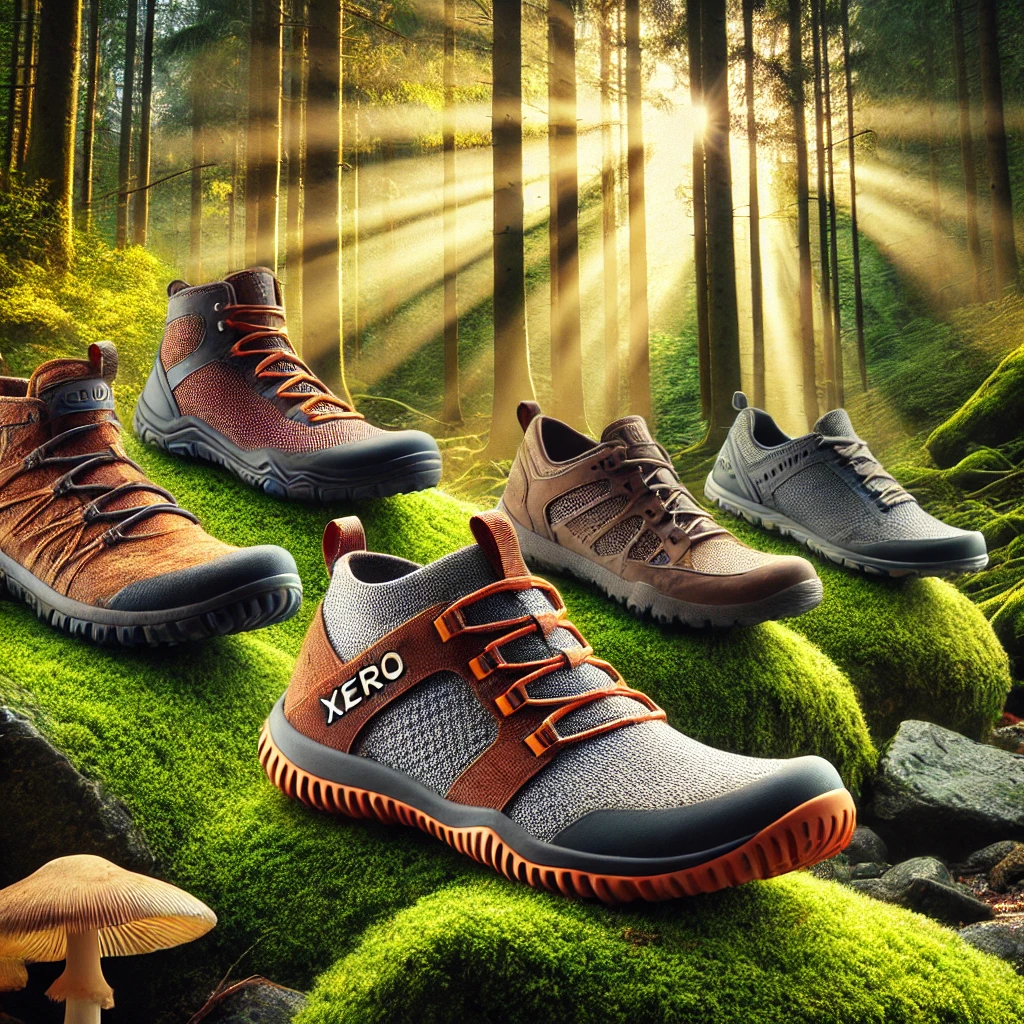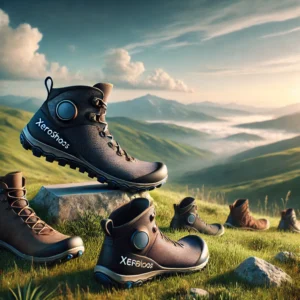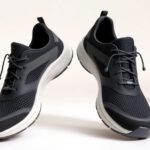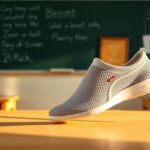
You might be curious about the growing trend of barefoot shoes and their impact on foot health. These innovative footwear options can significantly improve your natural walking pattern and foot strength, but they also raise many questions for first-time users. Understanding barefoot shoes is crucial for handling foot discomfort or enhancing your walking experience. However, transitioning too quickly can lead to foot strain. We’ve compiled this comprehensive guide to answer your most frequent questions about barefoot shoes, from basic concepts to specific benefits and potential risks.
Basic Understanding of Barefoot Shoes
To help you understand barefoot footwear better, these shoes represent a return to natural foot movement and function. Unlike conventional footwear, barefoot shoes allow your feet to move as nature intended, improving foot strength and better posture.
Definition and Core Features
With barefoot shoes, you get essential features that set them apart from traditional footwear: a wide toe box that allows natural toe spread, zero-drop design (heel at the same height as toes), and a thin, flexible sole for maximum ground feel. These characteristics help your feet function as they would naturally.
Benefits and Science Behind Them
Any transition to barefoot shoes can significantly improve foot strength, with studies showing a 57.4% increase in foot muscle strength after six months of regular use. Your feet can develop better balance, improved posture, and enhanced sensory feedback.
Considering the scientific evidence, barefoot shoes offer multiple advantages for your foot health. Research indicates that people who wear minimalist footwear or go barefoot develop fewer foot-related problems compared to those wearing conventional shoes. However, it’s important to note that you should transition gradually to prevent injury.
Health and Comfort
There’s growing evidence that barefoot shoes can provide significant health benefits for your feet and overall body alignment. Your feet contain 26 bones, 33 joints, and over 100 muscles, tendons, and ligaments that need proper movement to stay healthy. Barefoot shoes allow these structures to work naturally, promoting better balance, posture, and strength.
Transition Period
Above all, your transition to barefoot shoes must be gradual. Most people need 4-8 weeks to adapt safely. Start by wearing your barefoot shoes for 30 minutes daily, gradually increasing the duration. Listen to your body and adjust your transition pace accordingly. Moving too quickly can lead to discomfort or injury.
Medical Considerations
After consulting with your healthcare provider, you can determine whether barefoot shoes suit your condition. Many foot issues, including plantar fasciitis and bunions, have shown improvement with proper transition to minimalist footwear. However, some situations may require special consideration or modified approaches.
For instance, if you have diabetes, neuropathy, or severe foot deformities, you’ll need careful monitoring during the transition. Your healthcare provider can help create a safe transition plan and monitor your progress. Some users report reduced pain and improved foot function after switching to barefoot shoes, but individual results vary based on specific conditions.
Technical Aspects
Let’s examine the key technical features that make barefoot shoes unique. These shoes are built on three main principles: a zero-drop platform, a wide-toe box, and a flexible, thin sole. Understanding these elements will help you make informed footwear choices and ensure proper foot development.
Zero Drop Explained
The zero-drop design is among the most essential features of barefoot shoes, meaning the heel and forefoot are at the same height. This creates anflat platform allowingyour feet to maintain their natural position. Conventional shoes typically have a heel elevation of 8-12mm, which can alter your walking pattern and affect your posture.
Toe Box Design
Around 70% of people wear shoes too narrow for their feet. Barefoot shoes feature a wide, anatomically shaped toe box that allows your toes to spread naturally. This design helps you maintain balance and lets your feet function as nature intended.
But the benefits of a proper toe box design go beyond comfort. This feature allows for natural toe splay during movement, crucial for proper balance and foot strength. When your toes can spread naturally, you’ll experience better grip, improved stability, and reduced risk of common foot problems like bunions and hammer toes.

Common Concerns
Once again, your transition to barefoot shoes may raise several questions about practicality and daily use. While these concerns are natural and valid, most users find that barefoot shoes can adapt to various situations with proper selection and use. Your comfort and safety remain the primary focus as you explore these alternatives to conventional footwear.
Weather and Protection
Among the top concerns, many ask about protection from weather and rough terrain. Modern barefoot shoes offer various levels of security, from waterproof materials to reinforced toe caps. Your feet can stay dry and safe in rain or snow with proper barefoot footwear. Many models now include weather-resistant features while maintaining the crucial barefoot shoe characteristics.
Style and Fashion
Above all, you might worry about the look of barefoot shoes in professional or social settings. The market now offers diverse style options, from casual sneakers to formal dress shoes. Your wardrobe doesn’t need to suffer – barefoot shoes have evolved beyond early models’ “odd-looking” reputation.
For instance, you can find barefoot shoes in leather finishes for office wear, athletic sports designs, and casual everyday styles. Many brands now create fashion-forward options that blend seamlessly with current trends while maintaining the health benefits of minimalist footwear. Your style choices can still reflect your taste while supporting foot health.
Choosing Your First Pair
Keep your first barefoot shoe purchase simple and focused on comfort. Your initial pair should be for everyday use, allowing you to adjust gradually to the minimal design. Many people start with casual sneakers or walking shoes, which offer versatility for different activities while maintaining the essential barefoot features.
Sizing Guidelines
An accurate fit is vital for barefoot shoes, which typically require more space than conventional footwear. Your toes should have room to spread naturally, with about 1-1.5 cm of space beyond your longest toe. Consider ordering a half size up from your regular size, as many users find this provides optimal comfort.
Essential Features
An ideal first pair of barefoot shoes should include these essential elements: a zero-drop sole (same height from heel to toe), a wide toe box for natural toe spread, and a flexible sole that allows natural foot movement. Avoid shoes with arch support or excessive cushioning.
Sizing variations exist between brands, so check each manufacturer’s specific sizing chart. For beginners, look for shoes with a sole thickness between 6-10mm, which offers adequate protection while maintaining a ground feel. The upper material should be breathable and allow your foot to move naturally.
Daily Use and Care
Despite their minimal design, barefoot shoes require proper care to maintain functionality and longevity. You need to understand basic maintenance and breaking-in procedures to get the most out of your minimalist footwear.
Breaking In Period
Contrary to common belief, barefoot shoes don’t need extensive breaking in. Your feet, however, need time to adapt. Start with 2-3 hours of wear daily and gradually increase the duration. Listen to your body’s signals and adjust accordingly.
Maintenance Tips
By following these basic care guidelines, you can extend your barefoot shoes’ lifespan:
- Clean regularly with a soft brush
- Let them air dry naturally
- Rotate pairs to prevent excess wear
- Store in a cool, dry place
Assume that proper care will double your shoes’ lifespan.
In addition to essential maintenance, consider these advanced care tips:
- Use natural cleaning products for leather shoes
- Apply waterproof treatment every 3 months
- Check sole wear patterns monthly
- Replace worn insoles when needed
Assume that these steps will help maintain your shoes’ performance and comfort.
To wrap up
The transition to barefoot shoes can transform your walking experience and foot health. You can now make informed decisions about barefoot footwear choices that match your needs. Your journey to stronger, healthier feet starts with understanding the basics: wide toe boxes, zero drop soles, and proper transition time. As you begin using barefoot shoes, you’ll notice improvements in your foot strength, balance, and natural movement. Take the first step by choosing a pair that fits your lifestyle, and let your feet guide you toward better movement patterns.

FAQ
What is the main difference between barefoot shoes and regular shoes?
Barefoot shoes have four key features that set them apart from regular shoes: a wide toe box that allows toes to spread naturally, zero heel drop (completely flat sole), flexible materials that let feet move freely, and thin soles that enable a better ground feel. Regular shoes typically have narrow toe boxes, raised heels, rigid structures, and thick cushioned soles.
How long does it take to adjust to barefoot shoes?
The adjustment period to barefoot shoes varies for each person but typically takes 2-8 weeks. Start by wearing them for 30 minutes daily in the first week, then gradually increase wear time by 30 minutes each week. Listen to your feet and slow down if you experience discomfort. Most people fully adapt within 2-3 months of consistent, gradual use.
Can I wear barefoot shoes for running and exercise?
You can use barefoot shoes for running and exercise, but proper transition is vital. Start with walking and basic exercises first. Build up slowly to running, beginning with 5-10 minutes and increasing gradually. Focus on proper form – land on your midfoot or forefoot instead of your heel. Many athletes report improved performance and fewer injuries after switching to barefoot shoes.








It’s fascinating to see how the conversation around barefoot shoes is gaining traction, especially as more people become aware of the implications of footwear on overall health. I remember when I first encountered barefoot shoes; I approached them with both curiosity and skepticism. However, my own experiences have opened my eyes to their potential benefits.
It’s refreshing to hear your journey with barefoot shoes. That blend of curiosity and skepticism is something many people experience. It’s intriguing how our feet, often overlooked, can impact so many aspects of our health.
I completely relate to your journey with barefoot shoes. It’s such a mix of curiosity and skepticism, especially when you realize how entrenched traditional footwear has been in our understanding of comfort and support. I remember my own first experience with them; it felt odd at first, almost like going back to basics. But once I got used to the minimalist feel, I found that my body adapted in surprising ways.
I can really relate to your feelings about barefoot shoes. It’s such a unique experience, isn’t it? I’ve had that same mix of curiosity and skepticism when diving into the world of minimalist footwear. At first, I was hesitant about the lack of cushioning and support that I had always been told was essential for comfort. It felt almost revolutionary to step into something so simple.
It’s interesting to hear that you’ve had a similar journey with barefoot shoes. That sense of curiosity mixed with skepticism can really turn the whole experience into an adventure. When I first ventured into minimalist footwear, I had my own doubts circling in my mind. The idea of stepping into shoes that seemed to take away everything I’d been taught about comfort felt like I was venturing into uncharted territory.
I can relate to that feeling of stepping into uncharted territory. The transition to barefoot shoes definitely felt like a leap of faith, especially when everything I knew about comfort was being challenged. I remember my first pair vividly; they were so different from the cushioned trainers I was used to. At first, it was a bit uncomfortable—like I was rediscovering my own feet. But there’s something about that direct connection to the ground that’s oddly liberating.
I completely understand what you mean about the blend of curiosity and skepticism when it comes to barefoot shoes. It really does feel like a shift in thinking, especially when we’ve been conditioned to associate comfort with cushioning and support. I remember my first experience slipping on a pair—I was both excited and nervous. Going from what felt like a plush cloud to the ground underfoot was a big change.
It’s fascinating, isn’t it? That initial moment when you slip into barefoot shoes can feel like stepping into a whole new world. The shift from that cushy support to a more grounded experience makes you reconsider what comfort really means. That blend of excitement and nervousness is so relatable—it’s like you’re venturing into a new territory where your body starts to regain a sense of awareness that we sometimes lose in overly cushioned shoes.
I get where you’re coming from. That initial mix of curiosity and skepticism is such a common experience when diving into the world of barefoot shoes. It’s like stepping into uncharted territory, where everything we thought we knew about comfort and support begins to unravel. I remember my own first encounter—taking off those cushioned, heavily structured shoes felt a bit rebellious, almost like I was shedding layers of what I had been conditioned to believe was necessary for my feet.
I can relate to that sense of rebellion you felt when you first ditched those conventional shoes. It’s almost like discovering a hidden truth about how our bodies really want to move. I remember feeling a mix of excitement and anxiety the first time I slipped on a pair of barefoot shoes—it was as if I was reconnecting with something instinctual.
I can totally relate to that sense of rebellion—if you’re curious about how Xero shoes hold up over time, I recently came across a review that really digs into their durability and warranty, which might just address some of those initial questions we all have.
‘How Durable Are Xero Shoes? 2025 Review of the 5,000-Mile Sole Warranty’
https://myshoesfinder.com/durability-of-xero-shoes-2025-review/.
It’s interesting how curiosity mixed with skepticism often leads to the most enlightening experiences. I felt the same way when I first decided to try barefoot shoes; they seemed so alien compared to the heavily cushioned styles I was used to. Initially, I wasn’t sure how my feet would respond, but over time, I began to notice a shift in my overall foot strength and posture.
Your experience with barefoot shoes really resonates with me. It’s fascinating how stepping outside of our comfort zone—especially when it comes to something as fundamental as footwear—can unlock new dimensions in our physical well-being. I remember my initial hesitation when I first transitioned to minimalistic shoes. I felt like I was walking on a tightrope, each step a mix of uncertainty and excitement.
It’s great to hear about your journey with barefoot shoes. That blend of curiosity and skepticism is so relatable, especially when we’re talking about something as fundamental as footwear. When I first tried them on, I felt that tension between wanting to embrace the natural feel and the question of whether they could actually support my daily activities.
I completely get that sense of tension you mention. When I first slipped on a pair of barefoot shoes, it felt liberating in a way, but I also couldn’t shake off the doubts. It’s intriguing how our footwear choices influence our connection to the ground and our movement. I remember a conversation I had with a friend who’s an avid hiker; he swears by them for their ability to enhance proprioception, that sense of where our body is in space.
I completely relate to that tension you mentioned. When I first started looking into barefoot shoes, I had a similar mix of excitement and skepticism. It felt almost counterintuitive to step away from the cushioning and support we’ve been conditioned to think we need.
I found your exploration of barefoot shoes particularly intriguing, especially the way you highlight their potential to enhance our natural walking patterns. It raises so many important considerations about how our foot health is often overlooked in a world dominated by conventional footwear. I’ve personally been on a journey to transition to barefoot shoes over the past year after experiencing persistent foot pain from wearing more traditional styles.
It’s great to hear about your journey with barefoot shoes and how they’ve made a difference for you. It’s really interesting to think about how our choice of footwear can affect not just comfort, but overall foot health. Many people don’t realize that conventional shoes can change the way we walk and run, often leading to discomfort or pain.
I’m glad to hear you found the exploration of barefoot shoes intriguing! It really does shine a light on how we often overlook foot health, especially in a society that prioritizes style over comfort and functionality. The transition you’ve made over the past year sounds like a significant shift, and it’s interesting to hear how your experience with traditional footwear led you to reconsider what you put on your feet.
I’ve been experimenting with barefoot shoes for a few months now, and I can really relate to the points raised about transitioning slowly! At first, I was so eager to embrace the benefits that I ended up with some foot discomfort after a few long walks. It’s fascinating how something as seemingly simple as footwear can have such a profound effect on our overall posture and movement.
It’s great to hear about your experience with barefoot shoes. Transitioning can definitely reveal how interconnected our feet, posture, and overall movement really are. That initial discomfort you felt is something many encounter—it’s quite the adjustment for our muscles and tendons that may not be used to the demands of less structured footwear.
It’s interesting how much our footwear choices can impact our overall well-being. I remember my own transition into barefoot shoes; it felt like I was rediscovering my feet in a way. That initial discomfort can be quite enlightening, highlighting just how much we take for granted the support and structure we often rely on. It’s been a reminder of the importance of gradually building up strength in those muscles and tendons.
It’s fascinating how your own experience resonates with many who make the shift towards barefoot shoes. That initial feeling of discomfort can be a stark reminder of how disconnected we’ve become from the natural mechanics of our feet. For most of us, our daily footwear choices are often made with appearance and convenience in mind rather than function. I think it’s interesting how you described it as a kind of rediscovery.
It’s great to hear about your experience with barefoot shoes. I think many people underestimate how our feet adapt to different types of footwear. That initial excitement can really lead us to push our limits without realizing the changes our bodies need to make. It’s interesting how a simple shift in how we approach walking can highlight imbalances or weaknesses we didn’t notice before.
I completely resonate with that perspective on barefoot shoes. It’s fascinating how something seemingly simple can really challenge how we think about movement and body mechanics. I remember when I first made the switch, I was so eager to embrace the benefits that I didn’t pay as much attention to the adjustments my body was going through. It’s almost like a crash course in mindfulness for your feet.
Transitioning to barefoot shoes can feel a bit like jumping into cold water—exciting at first, but then reality hits, and you find yourself wishing for a safety float. I can totally relate to that eagerness to dive headfirst into all the supposed benefits, only to be reminded that our feet are not quite as adaptable as we’d like them to be, right? Those first few days can leave you questioning the decision with every twinge and ache.
Jumping into barefoot shoes can really be a mixed bag. The initial thrill often masks the adjustments our feet need to make. I totally get that feeling of regret when those first twinges and aches start to surface. Our feet have been used to a certain way of life, and switching things up isn’t always easy.
It’s interesting to hear your experience with barefoot shoes. I can definitely relate to that urge to dive in headfirst, especially when you start reading about all the benefits like improved posture and a more natural walking style. When I first transitioned, I was pretty ambitious too, and I learned the hard way about the importance of a gradual approach.
I appreciate your thoughts on the transition to barefoot shoes. It’s a journey many of us embark on with a combination of excitement and a bit of naivety. It’s fascinating how quickly the allure of barefoot benefits can pull us in. The posture and natural movement benefits often sound so compelling on paper, not to mention the promise of a more grounded connection to the terrain beneath our feet.
I completely resonate with your thoughts on the transition to barefoot shoes. It can indeed feel like an exciting leap into a new way of moving, but also one filled with uncertainty. I remember when I first made the switch; it was almost overwhelming to think about how something as simple as footwear could impact my posture and movement. There’s something incredibly intriguing about the idea of returning to our roots, literally feeling the ground beneath us, and connecting with the environment in a more intimate way.
It’s great to hear about your experience with barefoot shoes. That initial foot discomfort is something many of us can relate to when making the switch. The body really needs time to adjust, doesn’t it?
It’s great to hear about your experience with barefoot shoes. Transitioning to them can definitely be a journey; your story reflects a common reality for many. Those initial moments of discomfort often serve as a reminder that our bodies need time to adapt.
It’s interesting to hear about your experience with barefoot shoes. Many people go through a similar journey when making the switch. The excitement to embrace barefoot benefits often leads to pushing limits too quickly, which can definitely result in discomfort.
The exploration of barefoot shoes is indeed a fascinating topic, especially considering our modern lifestyles and the impact of conventional footwear on foot health. I particularly resonate with the idea that transitioning to barefoot shoes requires careful consideration. Having made the switch myself, I experienced a range of benefits, such as improved balance and a more natural stride. However, I also learned the hard way about the importance of gradually adapting to them to avoid strain.
I totally get where you’re coming from. The whole barefoot shoe journey can feel like walking on a tightrope at times, can’t it? It’s amazing how our feet can adapt and thrive when we give them a chance to do their own thing. I’ve had my share of those “aha” moments too—like realizing just how much better my balance is when I ditch the sneakers.
Your exploration of barefoot shoes reshapes our understanding of footwear’s role in health and movement, which I find particularly compelling. The trend toward barefoot shoes seems to be gaining traction not just as a fashion statement but as a thoughtful approach to enhancing our natural biomechanics. It raises an important point about how disconnected we often are from the way our bodies are designed to move.
I appreciate your insights on barefoot shoes and their impact on our understanding of footwear’s role in health and movement. It’s refreshing to see how this trend is resonating with many who are looking beyond just aesthetics. The connection between footwear and our natural biomechanics is something I’ve been contemplating a lot lately.
It’s great to hear that you’re exploring the deeper connections between footwear and our biomechanics. This conversation is gaining traction for good reason; many people are starting to recognize that the way we interact with our environment, especially through our choice of shoes, can have significant implications for overall health.
I completely resonate with your thoughts on how barefoot shoes have shifted the conversation around footwear and its influence on our health and movement. It’s interesting to see how this trend is gaining traction, especially as more people begin to realize the importance of our natural biomechanics in everyday activities.
It’s great to hear this resonates with you. The connection between our footwear and natural biomechanics is such an intriguing topic, isn’t it? It makes me think of how much we often overlook the role of our environment in shaping our health.
I recently came across a guide on the therapeutic benefits of barefoot shoes that dives deeper into how they align with our natural biomechanics—thought you might find it as intriguing as I did.
‘Therapeutic Benefits of Xero Shoes: 2025 Medical Applications Guide’
https://myshoesfinder.com/therapeutic-benefits-of-xero-shoes-2025-guide/.
I’ve been on the barefoot shoes journey for a little while now, and I must say, it’s like going from a stuffy ball gown to a cozy pair of pajamas. At first, my feet felt like they were protesting the sudden freedom, as if they were saying, “Whoa there, what’s this ‘natural movement’ thing you’re talking about?!” I remember trying to break them in during a brisk walk and regretting my life choices when I got home.
It’s interesting to see the growing interest in barefoot shoes; it really makes you think about how much our footwear has influenced not just our walking patterns but our overall health as well. I’ve been on a bit of a journey exploring different types of shoes and their effects on my own foot health, so this topic really resonates with me.
It’s great to hear about your journey with different types of shoes. The shift towards barefoot footwear really highlights how our daily choices can impact our health in ways we might not initially consider. Many people don’t realize that modern shoes, especially those with lots of cushioning and elevated heels, can alter our natural gait. This might lead to issues over time, like foot fatigue or even joint pain.
It’s great that you’re diving into the world of different footwear and how it impacts your feet. The shift towards barefoot shoes really does raise questions about the conventional footwear we’ve all been so used to. Many people don’t realize just how much cushioning and support can actually alter our natural way of walking.
It’s true; the way we think about footwear really needs to be reexamined. I’ve been exploring barefoot shoes myself, and it’s fascinating how our bodies adapt to different levels of support. Initially, I thought the transition would be uncomfortable, but I was surprised by how intuitive it felt once I got used to it.
You’ve brought up some important points about the transition to barefoot shoes. It’s interesting how our expectations can shape our experiences. Many people assume that more cushioning means more comfort, yet, as you found out, our bodies can adapt pretty quickly when we let them.
It’s interesting to hear about your experience with barefoot shoes. The process of adapting to them often reveals so much about our natural movement patterns. Many people have this notion that we need a high level of cushioning and structure, but once you start to listen to your body, it’s amazing how quickly you can shift your perspective. The initial discomfort can feel daunting, but I agree—once you find your stride, there’s a certain freedom in it.
It’s fascinating to hear your perspective on barefoot shoes. I totally agree that the transition reveals a lot about our natural movement patterns and how we’ve been conditioned to think about foot support. I remember when I first tried transitioning to barefoot shoes; the initial discomfort was a bit of a wake-up call. It made me realize how much I had depended on cushioning and structure—not just in my shoes, but in my overall approach to physical activity.
It’s fascinating, right? The way footwear shapes how we move and feel is often overlooked. I went through a similar exploration when I switched to barefoot shoes—initially, it felt a bit strange, almost like I was rediscovering how to walk. But over time, I noticed my feet got stronger and my posture improved. It’s like giving your feet the chance to do what they were designed to do.
It’s great to hear that you’ve been on a journey exploring different types of shoes and their impacts on foot health. This whole conversation around footwear is quite fascinating because it often goes much deeper than just aesthetics or style. Many of us don’t realize just how much conventional shoes can constrain the natural movement of our feet.
It’s fascinating to see how barefoot shoes are reshaping our understanding of foot health and movement. I’ve recently started incorporating them into my routine, and the transition has certainly been eye-opening. Initially, I experienced some discomfort, which made me realize just how accustomed I had become to conventional shoes.
It’s interesting to hear about your experiences with barefoot shoes. I remember when I made the switch; I was surprised by how much my feet had adapted to the added cushioning and support of traditional footwear. The initial discomfort you mentioned is often part of the learning curve. It’s almost as if our feet forget what it feels like to be more grounded and connected to the surface.
It is interesting to think about how our feet adapt over time. Your experience resonates with me; when I first switched to barefoot shoes, it was like rediscovering something I didn’t even realize I was missing. The initial discomfort was surprising, but I started to appreciate how sensitive our feet are and how much sensory information we can block out with traditional cushioning.
It’s great to hear you’re exploring barefoot shoes! That initial discomfort is pretty common as our feet adjust. It’s interesting how much of our foot health gets overlooked simply because we’re used to cushioning and arch support in conventional shoes.
I’ve recently dipped my toes into the world of barefoot shoes, and it’s been an eye-opener! At first, I was skeptical about how much a shoe could really affect foot health, but after using them for a couple of weeks, I can totally feel the difference in my posture and general comfort while walking.
It’s fascinating to delve into the world of barefoot shoes and their approach to natural foot movement. I’ve recently started exploring this type of footwear, and I can attest to the initial adjustment period. When I first transitioned, I underestimated how quickly my feet would adapt. Gradually increasing wear time made all the difference in avoiding discomfort.
It’s great to hear about your journey into barefoot shoes! That adjustment period can really surprise you, right? It’s almost like our feet are waking up after being in standard shoes for so long. I think one of the coolest aspects of barefoot footwear is how much awareness it brings to our foot mechanics.
I appreciate the insights you’ve shared about barefoot shoes and their effects on foot health. It’s fascinating how our footwear choices can influence not just our comfort, but also our overall body mechanics. I’ve been intrigued by the concept of going minimalist with shoes, as I’ve noticed how traditional shoes sometimes create unnatural pressure points that lead to discomfort.
It’s interesting how many of us are starting to notice the impact our footwear has on our bodies, isn’t it? The shift towards minimalist shoes really highlights how important it is to listen to our feet. Traditional footwear can indeed create those pressure points that, over time, not only cause discomfort but can also affect our overall alignment and even how we move day to day.
It’s fascinating how barefoot shoes are redefining our approach to footwear and foot health! I recently made the switch after years of relying on conventional shoes, and the difference has been remarkable. Initially, I struggled with some discomfort as my feet adjusted, but sticking with it has really strengthened my arch and improved my overall posture.
It’s interesting how our feet have opinions on footwear, isn’t it? They’re a bit like stubborn toddlers—once they get used to something, they’re not keen on change. But it sounds like your feet are finally doing the happy dance now that they’re in more natural shoes!
It really is fascinating how our feet seem to have this little personality of their own. I never thought of them as stubborn toddlers, but that analogy makes perfect sense—they definitely let you know when they’re unhappy. I used to wear shoes that didn’t quite fit right, and I remember how it felt like a battle every time I put them on.
I’ve been following the rise in popularity of barefoot shoes for a while now, and it’s fascinating to see how they challenge our long-standing perceptions of footwear. As someone who has made the switch myself, I can share how this transition was a journey filled with both excitement and learning. Initially, I experienced that common foot discomfort mentioned in your post, which really highlighted the importance of easing into this new way of moving.
The trend of barefoot shoes is indeed fascinating and seems to be gaining momentum in recent years. As someone who has personally experimented with this type of footwear, I can attest to the shift it brings not only to one’s walking pattern but also to the overall awareness of how we use our feet. The idea of returning to a more natural foot movement resonates deeply with me, especially considering the increasing reliance on cushioned, structured shoes that often mask our body’s natural mechanics.
You bring up some important points about the shift in our awareness regarding foot movement and the impact of barefoot shoes. It’s true that many people start to notice how much cushioned and structured footwear can alter not just our walking pattern but our entire approach to movement. When you take off those layers of padding and support, it often forces you to reconnect with your feet in ways we might not even be aware we were missing.
This is a fascinating exploration of barefoot shoes and their impact on foot health. I appreciate how you emphasize the importance of understanding the transition to barefoot footwear, as many people overlook the potential for strain if they rush into it. Personally, I’ve found that incorporating barefoot shoes into my routine improved my overall posture and reduced minor aches in my feet and lower back.